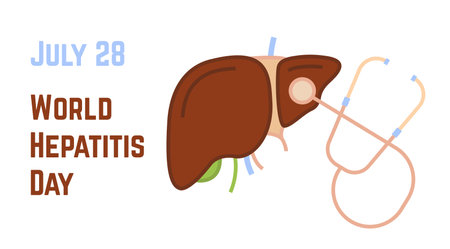1. Understanding Diaphragmatic Breathing: Anatomy and Physiology
What is the Diaphragm?
The diaphragm is a large, dome-shaped muscle located at the base of your lungs. It separates the chest cavity from the abdominal cavity and plays a key role in breathing. When you inhale, the diaphragm contracts and moves downward, allowing your lungs to expand and fill with air. When you exhale, it relaxes and moves upward, helping push air out of your lungs.
How Does Diaphragmatic Breathing Work?
Diaphragmatic breathing, also called “belly breathing,” means using your diaphragm effectively when you breathe instead of relying mostly on your chest muscles. This technique encourages deeper breaths, which can improve oxygen exchange and help reduce stress.
Main Steps in Diaphragmatic Breathing:
| Step | Description |
|---|---|
| Inhalation | The diaphragm contracts and flattens, creating more space in the chest cavity. The abdomen rises as the lungs fill with air. |
| Exhalation | The diaphragm relaxes and returns to its dome shape, pushing air out of the lungs. The abdomen falls as you breathe out. |
Why is Diaphragmatic Breathing Important for Pulmonary Health?
Proper diaphragmatic breathing helps improve lung efficiency by allowing more air to reach the lower parts of the lungs where gas exchange is most effective. This method of breathing can also help reduce shortness of breath, strengthen the respiratory muscles, and promote relaxation throughout the body. For people with chronic lung conditions like COPD or asthma, learning to use the diaphragm can make everyday activities easier and improve quality of life.
Benefits of Diaphragmatic Breathing:
| Benefit | Description |
|---|---|
| Better Oxygen Exchange | Deep breathing brings more oxygen into the bloodstream and removes more carbon dioxide. |
| Improved Lung Function | Strengthens respiratory muscles and increases lung capacity over time. |
| Reduced Stress Response | Activates the bodys natural relaxation response, lowering heart rate and blood pressure. |
| Easier Breathing During Activity | Makes physical activity less tiring for people with lung conditions. |
Key Takeaway:
Understanding how your diaphragm works can empower you to breathe better every day. Using diaphragmatic breathing techniques supports healthy lungs, helps manage symptoms of respiratory conditions, and promotes overall well-being.
2. The Science Behind Diaphragmatic Breathing
Diaphragmatic breathing, often called “belly breathing,” is more than just a relaxation technique—it has a strong scientific foundation that supports its use in pulmonary care and overall health. Let’s take a closer look at what happens inside your body when you practice diaphragmatic breathing, and why it matters for your lungs and well-being.
How Diaphragmatic Breathing Works
The diaphragm is a dome-shaped muscle located beneath the lungs. When you inhale deeply using your diaphragm, the muscle contracts and moves downward. This movement creates more space in your chest cavity, allowing your lungs to expand more fully. As a result, air flows deeper into the lower parts of your lungs, which are rich in blood vessels and play a key role in gas exchange.
Key Mechanisms Involved
| Mechanism | Description |
|---|---|
| Improved Gas Exchange | Deeper breaths bring more oxygen into the alveoli (tiny air sacs), increasing oxygen uptake and carbon dioxide removal. |
| Increased Lung Volumes | Diaphragmatic breathing helps fill the lower lobes of the lungs, leading to higher tidal volume and vital capacity. |
| Autonomic Regulation | This technique stimulates the parasympathetic nervous system (“rest and digest”), reducing heart rate and promoting relaxation. |
Latest Research on Physiological Benefits
Recent studies show that diaphragmatic breathing can make a real difference for people with respiratory conditions like asthma, COPD (chronic obstructive pulmonary disease), and even healthy individuals who want to boost lung function. Here are some highlights from current research:
- Gas Exchange: Deep belly breathing improves oxygen saturation in the blood by making sure more air reaches all parts of the lungs.
- Lung Volumes: Practicing this technique regularly can increase vital capacity, helping people take fuller breaths with less effort.
- Autonomic Nervous System: Slow, controlled breathing activates the vagus nerve, lowering stress hormones and supporting heart health.
Clinical Applications in Pulmonary Care
Healthcare professionals across the U.S. are incorporating diaphragmatic breathing exercises into rehab programs for patients recovering from surgery, managing chronic lung diseases, or seeking stress relief. These simple exercises can be done at home or with guidance from respiratory therapists or physical therapists to support better breathing patterns and improve quality of life.

3. Evidence-Based Diaphragmatic Breathing Techniques
Diaphragmatic breathing, also known as belly breathing or abdominal breathing, is a cornerstone of respiratory therapy in the United States. Backed by research and clinical experience, these techniques help improve lung function, decrease shortness of breath, and support overall well-being for people with pulmonary conditions such as COPD, asthma, and post-surgical recovery. In this section, you’ll find practical step-by-step instructions for key diaphragmatic breathing strategies that align with American respiratory care standards.
Step-by-Step Guide to Diaphragmatic Breathing
- Find a Comfortable Position: Sit upright in a chair with your feet flat on the floor or lie on your back with your knees slightly bent. Place one hand on your chest and the other on your belly, just below your rib cage.
- Breathe In Through Your Nose: Take a slow, deep breath in through your nose. Focus on expanding your belly outward while keeping your chest still. You should feel your lower hand rise more than the hand on your chest.
- Exhale Slowly: Purse your lips (as if blowing out birthday candles) and slowly breathe out. Let your belly gently fall inward as you exhale. Try to keep your upper chest relaxed and still.
- Repeat: Practice this technique for 5–10 minutes at least twice per day or as recommended by your healthcare provider.
Key Points for Effective Practice
- Aim for slow, even breaths — do not rush.
- If you feel dizzy or lightheaded, pause and return to normal breathing before resuming.
- This technique may feel awkward at first but becomes easier with regular practice.
Comparison Table: Chest vs. Diaphragmatic Breathing
| Chest Breathing | Diaphragmatic Breathing | |
|---|---|---|
| Main Movement Area | Upper chest rises | Belly expands outward |
| Muscles Used | Accessory muscles (neck/shoulders) | Mainly diaphragm muscle |
| Breath Efficiency | Shallow, quick breaths | Deep, slow breaths |
| Relaxation Effect | Minimal relaxation effect | Promotes relaxation and calmness |
| Lung Expansion | Limited lung expansion | Maximizes lung capacity |
Pursed-Lip Breathing: A Useful Companion Technique
Pursed-lip breathing is often paired with diaphragmatic breathing in American pulmonary rehab programs. It helps control shortness of breath and improves oxygen exchange during activity or flare-ups.
Pursed-Lip Breathing Steps:
- Breathe in slowly through your nose for two counts.
- Purse your lips (like you’re blowing out a candle).
- Breathe out gently and slowly through pursed lips for four counts.
- Repeat as needed to manage breathlessness.
Tips from American Respiratory Therapists:
- Practice daily so these techniques become second nature during activity or stress.
- If you’re unsure about technique, ask a licensed respiratory therapist or physical therapist for feedback — many U.S. clinics offer supervised training sessions.
- Use these techniques before exertion (like walking up stairs) to prevent shortness of breath.
4. Applications in Pulmonary Rehabilitation and Care
How Diaphragmatic Breathing Fits into Pulmonary Rehab Programs
Diaphragmatic breathing, often called “belly breathing,” is a cornerstone technique in many pulmonary rehabilitation (pulm rehab) programs across the United States. Healthcare professionals, such as respiratory therapists, physical therapists, and occupational therapists, use this method to help patients improve lung function, manage breathlessness, and enhance overall quality of life. The science behind diaphragmatic breathing shows that it helps strengthen the diaphragm muscle, encourages efficient oxygen exchange, and reduces the work of breathing. In pulm rehab settings, patients with chronic obstructive pulmonary disease (COPD), asthma, interstitial lung disease, or recovering from COVID-19 are frequently taught this technique as part of their care plan.
Clinical Scenarios for Diaphragmatic Breathing
In real-world clinical practice in the U.S., diaphragmatic breathing is used in various scenarios. Here’s a quick overview:
| Clinical Scenario | Goal of Diaphragmatic Breathing | Common Approach |
|---|---|---|
| COPD Management | Reduce shortness of breath during activity | Practiced during walking or daily tasks under therapist supervision |
| Asthma Flare-Ups | Regain control during acute attacks | Taught as an emergency self-management tool |
| Post-Surgical Recovery (e.g., after lung surgery) | Prevent atelectasis and improve lung expansion | Guided sessions in hospital or outpatient rehab clinics |
| Pulmonary Fibrosis & Interstitial Lung Diseases | Maximize remaining lung capacity & reduce anxiety about breathlessness | Included in customized home exercise programs with virtual check-ins |
| Anxiety-Related Dyspnea (Breathlessness) | Break the cycle of anxiety and breathlessness | Integrated with relaxation and mindfulness strategies by behavioral health teams |
The Role of Healthcare Professionals in Pulmonary Rehab Programs
Pulmonary rehab teams in the U.S. commonly include a mix of respiratory therapists, nurses, physicians, physical therapists, and psychologists. These professionals assess each patient’s unique needs and customize breathing retraining sessions accordingly. They provide hands-on coaching to ensure proper technique and monitor progress over time. Many clinics also use digital health tools—like mobile apps or telehealth visits—to reinforce diaphragmatic breathing at home.
Typical Steps in Integrating Diaphragmatic Breathing into Care Plans:
- Assessment: Evaluate patients baseline breathing pattern and functional limitations.
- Education: Explain the benefits of diaphragmatic breathing using easy-to-understand language and visuals.
- Practice: Supervise initial practice sessions, correcting technique as needed.
- Progression: Incorporate into gradually more challenging activities (walking, stair climbing).
- Self-Management: Teach patients how to use the technique independently at home or during symptoms.
- Follow-Up: Provide ongoing support through check-ins or group classes to maintain long-term benefits.
Cultural Considerations in U.S. Clinical Practice
Pulmonary rehab programs across America emphasize patient-centered care. Materials are often adapted for different literacy levels and languages to reflect local communities. Some centers offer group classes that build social support while practicing diaphragmatic breathing together—a feature many American patients find motivating.
5. Patient Education and Community Integration
Teaching Diaphragmatic Breathing: A Practical Guide
Helping patients, families, and communities learn diaphragmatic breathing is essential for effective pulmonary care. In the American context, education should be clear, supportive, and culturally sensitive. Here are some best practices to make learning accessible and meaningful for everyone involved.
Step-by-Step Approach for Patients
| Step | Description | Tips for Success |
|---|---|---|
| 1. Explain the Benefits | Share how diaphragmatic breathing can help with lung function, stress reduction, and overall well-being. | Use relatable examples, like improving sports performance or managing anxiety. |
| 2. Demonstrate the Technique | Show the correct way to breathe using the diaphragm, either in person or through videos. | Encourage questions and repeat demonstrations as needed. |
| 3. Practice Together | Guide patients through slow, deep breaths while lying down or sitting comfortably. | Offer positive feedback and adjust instructions based on comfort level. |
| 4. Set Realistic Goals | Help patients set achievable daily practice goals (e.g., 5 minutes twice a day). | Praise small successes to boost motivation. |
| 5. Address Barriers | Troubleshoot challenges like forgetfulness or discomfort during practice. | Suggest reminders or relaxation strategies tailored to their routine. |
Culturally Sensitive Tips for American Communities
- Acknowledge Diversity: Recognize that cultural backgrounds may influence comfort with breathing exercises. Be open to adapting language and approaches as needed.
- Family Involvement: Encourage family participation by explaining the benefits for all ages—from kids to seniors—to build support at home.
- Community Workshops: Partner with local health centers, faith groups, or schools to offer group sessions in familiar settings.
- Accessible Materials: Use simple English and provide materials in other common languages (like Spanish) when possible. Include visuals for those who learn better through images.
- Relate to Daily Life: Connect diaphragmatic breathing to everyday situations—such as managing work stress, improving sleep, or preparing for sports—to increase relevance.
- Respect Privacy: Some individuals may feel self-conscious practicing new techniques. Offer options for private or small group sessions if needed.
The Role of Healthcare Providers in Education
Nurses, respiratory therapists, and rehabilitation specialists play a key role in teaching diaphragmatic breathing. Regular follow-up—by phone, telehealth, or in-person—can help reinforce learning and provide encouragement. Using patient-friendly handouts or apps can make it easier for people to practice at home between visits.
Summary Table: Key Strategies for Effective Education
| Main Focus | Example in Practice |
|---|---|
| Simplicity & Clarity | Use plain language and avoid medical jargon when explaining steps. |
| Cultural Sensitivity | Acknowledge holidays, traditions, or beliefs that may affect participation. |
| Engagement & Support | Create a safe space for questions and share success stories from similar backgrounds. |
| Sustained Practice | Suggest using smartphone reminders or joining community wellness challenges. |
By following these best practices, healthcare providers can empower patients and communities across America to make diaphragmatic breathing a valuable part of daily life and pulmonary health management.


